|
Courtesy of InterNACHI
The price you pay for your homeowners insurance can vary by hundreds of dollars, depending on the insurance company you buy your policy from. Here are some things to consider when buying homeowners insurance. 1. Shop Around It will take some time, but could save you a good sum of money. Ask your friends, check the Yellow Pages or contact your state insurance department. National Association of Insurance Commissioners (www.naic.org) has information to help you choose an insurer in your state, including complaints. States often make information available on typical rates charged by major insurers and many states provide the frequency of consumer complaints by company. Also check consumer guides, insurance agents, companies and online insurance quote services. This will give you an idea of price ranges and tell you which companies have the lowest prices. But don't consider price alone. The insurer you select should offer a fair price and deliver the quality service you would expect if you needed assistance in filing a claim. So in assessing service quality, use the complaint information cited above and talk to a number of insurers to get a feeling for the type of service they give. Ask them what they would do to lower your costs. Check the financial stability of the companies you are considering with rating companies such as A.M. Best (www.ambest.com) and Standard & Poor’s (www.standardandpoors.com) and consult consumer magazines. When you've narrowed the field to three insurers, get price quotes. DO NOT base your decision solely on the monthly premium. Quality of coverage and service varies greatly. 2. Raise Your Deductible Deductibles are the amount of money you have to pay toward a loss before your insurance company starts to pay a claim, according to the terms of your policy. The higher your deductible, the more money you can save on your premiums. Nowadays, most insurance companies recommend a deductible of at least $500. If you can afford to raise your deductible to $1,000, you may save as much as 25 percent. Remember, if you live in a disaster-prone area, your insurance policy may have a separate deductible for certain kinds of damage. If you live near the coast in the East, you may have a separate windstorm deductible; if you live in a state vulnerable to hail storms, you may have a separate deductible for hail; and if you live in an earthquake-prone area, your earthquake policy has a deductible. 3. Don’t confuse what you paid for your house with rebuilding costs The land under your house isn't at risk from theft, windstorm, fire and the other perils covered in your homeowners policy. So don't include its value in deciding how much homeowners insurance to buy. If you do, you will pay a higher premium than you should. 4. Buy your home and auto policies from the same insurer Some companies that sell homeowners, auto and liability coverage will take 5 to 15 percent off your premium if you buy two or more policies from them. But make certain this combined price is lower than buying the different coverages from different companies. 5. Make your home more disaster resistant Find out from your insurance agent or company representative what steps you can take to make your home more resistant to windstorms and other natural disasters. You may be able to save on your premiums by adding storm shutters, reinforcing your roof or buying stronger roofing materials. Older homes can be retrofitted to make them better able to withstand earthquakes. In addition, consider modernizing your heating, plumbing and electrical systems to reduce the risk of fire and water damage. 6. Improve your home security You can usually get discounts of at least 5 percent for a smoke detector, burglar alarm or dead-bolt locks. Some companies offer to cut your premium by as much as 15 or 20 percent if you install a sophisticated sprinkler system and a fire and burglar alarm that rings at the police, fire or other monitoring stations. These systems aren't cheap and not every system qualifies for a discount. Before you buy such a system, find out what kind your insurer recommends, how much the device would cost and how much you'd save on premiums. 7. Seek out other discounts Companies offer several types of discounts, but they don't all offer the same discount or the same amount of discount in all states. For example, since retired people stay at home more than working people they are less likely to be burglarized and may spot fires sooner, too. Retired people also have more time for maintaining their homes. If you're at least 55 years old and retired, you may qualify for a discount of up to 10 percent at some companies. Some employers and professional associations administer group insurance programs that may offer a better deal than you can get elsewhere. 8. Maintain a good credit record Establishing a solid credit history can cut your insurance costs. Insurers are increasingly using credit information to price homeowners insurance policies. In most states, your insurer must advise you of any adverse action, such as a higher rate, at which time you should verify the accuracy of the information on which the insurer relied. To protect your credit standing, pay your bills on time, don't obtain more credit than you need and keep your credit balances as low as possible. Check your credit record on a regular basis and have any errors corrected promptly so that your record remains accurate. 9. Stay with the same insurer If you've kept your coverage with a company for several years, you may receive a special discount for being a long-term policyholder. Some insurers will reduce their premiums by 5 percent if you stay with them for three to five years and by 10 percent if you remain a policyholder for six years or more. But make certain to periodically compare this price with that of other policies. 10. Review the limits in your policy and the value of your possessions at least once a year You want your policy to cover any major purchases or additions to your home. But you don't want to spend money for coverage you don't need. If your five-year-old fur coat is no longer worth the $5,000 you paid for it, you'll want to reduce or cancel your floater (extra insurance for items whose full value is not covered by standard homeowners policies such as expensive jewelry, high-end computers and valuable art work) and pocket the difference. 11. Look for private insurance if you are in a government plan If you live in a high-risk area -- say, one that is especially vulnerable to coastal storms, fires, or crime -- and have been buying your homeowners insurance through a government plan, you should check with an insurance agent or company representative or contact your state department of insurance for the names of companies that might be interested in your business. You may find that there are steps you can take that would allow you to buy insurance at a lower price in the private market. 12. When you’re buying a home, consider the cost of homeowners insurance You may pay less for insurance if you buy a house close to a fire hydrant or in a community that has a professional rather than a volunteer fire department. It may also be cheaper if your home’s electrical, heating and plumbing systems are less than 10 years old. If you live in the East, consider a brick home because it's more wind resistant. If you live in an earthquake-prone area, look for a wooden frame house because it is more likely to withstand this type of disaster. Choosing wisely could cut your premiums by 5 to 15 percent. Check the CLUE (Comprehensive Loss Underwriting Exchange) report of the home you are thinking of buying. These reports contain the insurance claim history of the property and can help you judge some of the problems the house may have. Remember that flood insurance and earthquake damage are not covered by a standard homeowners policy. If you buy a house in a flood-prone area, you'll have to pay for a flood insurance policy that costs an average of $400 a year. The Federal Emergency Management Agency provides useful information on flood insurance on its Web site at www.fema.gov/nfip. A separate earthquake policy is available from most insurance companies. The cost of the coverage will depend on the likelihood of earthquakes in your area. If you have questions about insurance for any of your possessions, be sure to ask your agent or company representative when you're shopping around for a policy. For example, if you run a business out of your home, be sure to discuss coverage for that business. Most homeowners policies cover business equipment in the home, but only up to $2,500 and they offer no business liability insurance. Although you want to lower your homeowners insurance cost, you also want to make certain you have all the coverage you need. Am I Covered? Common Questions Asked by Homeowners about Insurance If a fire, flood, earthquake, or some other natural disaster were to destroy or damage your home, would you have the right insurance coverage to rebuild your house? This brochure, based on the questions consumers most frequently ask, explains what is covered in a standard homeowners policy and what is not. Where gaps in coverage exist, it tells you how to fill them. To simplify explanations, assume that you have a policy known as Homeowners-3 (HO-3), the most common homeowners policy in the United States. Find out what type of homeowners policy you have. If you have a different policy, you should review your options in question #17. Question # 1: Am I covered for direct losses due to fire, lightning, tornadoes, wind storms, hail, explosions, smoke, vandalism and theft? Yes. The HO-3 provides broad coverage for these and other disasters or “perils,” as they are called in the policy, including all those listed in the question. You should check the dollar limits of insurance in your policy and make sure you are comfortable with the amount of insurance you have for specific items. Also, if you live near the Atlantic or Gulf coasts there may be some restrictions on your coverage for wind damage. Ask your agent about windstorm/hurricane deductibles. In areas prone to hailstorms, you may have a specific hail damage deductible. Question # 2: Are my jewelry and other valuables covered? The standard policy provides only from $1,000 to $2,000 for theft of jewelry. If your jewelry is worth a lot more, you should purchase higher limits. You may wish to add a floater to your policy to cover specific pieces of jewelry and other expensive possessions such as paintings, electronic equipment, stamp collections or silverware, for example. The floater will provide both higher limits and protect you from additional risks, not covered in your normal policy. Question # 3: If my house is totally destroyed in a fire and I have $150,000 worth of insurance to cover the structure, will this be enough to rebuild my home? If the cost of rebuilding your home is equal to or less than $150,000 you would have enough coverage. The HO-3 policy pays for structural damage on a replacement cost basis. If the cost of replacing your home is, say, $120,000, then that is all the insurance you need. On the other hand if the cost of rebuilding your home is $180,000, then you will be short $30,000. If you live in an area that is frequently hit by major storms, ask you insurance company about an extended or guaranteed replacement cost policy. This will provide a certain amount over the policy limit to rebuild your home so that if building costs go up unexpectedly, due to high demand for contractors and materials, you will have extra funds to cover the bill. If you choose not to rebuild your home, you will receive the replacement cost of your home, less depreciation. This is called actual cash value. You should make sure that the amount of insurance you have will cover the cost of rebuilding your house. You can find out what this cost is by talking to your real estate agent or builders in your area. Do not use the price of your house as the basis for the amount of insurance you purchase. The market price of your house includes the value of the land on which the house is situated. In almost all cases, the land will still be there after a disaster, so you do not need to insure it. You only need to insure the structure. Question # 4: Am I covered for flood damage? No. So, if you live in a flood-prone area it may be wise to purchase flood insurance. Flood insurance is provided by the federal government, under a program run by the Federal Insurance Administration. In some parts of the country, homes can be damaged or destroyed by mudslides. This risk is also covered under flood policies. Contact your agent or company representative to get this insurance or call the Federal Emergency Management Agency at 1-800-427-4661 or visit its Web site at www.fema.gov. Question # 5: A pipe bursts and water flows all over my floors. Am I covered? Yes. The HO-3 covers you for accidental discharge of water from a plumbing system. You should check your plumbing and heating systems once a year. While you are covered for damage, who needs the mess and hassle? Question # 6: What if water seeps into my basement from the ground, am I covered? No. Water seepage is excluded under the HO-3. And if the water seepage is not due to a flood you will not be covered under a flood policy. Seepage is viewed as a maintenance issue and is not covered by insurance. You should see a contractor about waterproofing your basement. Question # 7: Am I covered for earthquake damage? No. Earthquake coverage is sold as additional coverage to the homeowners policy. To find out whether you should buy this insurance, talk to your agent or company representative. The cost of this coverage can vary significantly from one area to another, depending on the likelihood of a major earthquake. Question # 8: A neighbor slips on my sidewalk or falls down my porch steps and threatens to take me to court for damages. Does my policy protect me? Yes. The policy will pay for damages, if a fall or other accident on your property is the result of your negligence. It will also pay for the legal costs of defending you against a claim. Also, the medical payments part of your homeowners policy will cover medical expenses, if a neighbor or guest is injured on your property. You should check to see how much liability protection you have. The standard amount is $100,000. If you feel you need more, consider purchasing higher limits. Question # 9: A tree falls and damages my roof during a storm. Am I covered? Yes. You are covered for the damage to your roof. You are also covered for the removal of the tree, generally up to a $500 limit. You should cut down dead or dying trees close to your house and prune branches that are near your house. It's true that your insurance covers damage, but falling trees and branches can also injure your family. Question # 10: During a storm, a tree falls but does no damage to my property. Am I covered for the cost of removing the tree? Your trees and shrubs are covered for losses due to risks like vandalism, theft and fire, but not wind damage. However, if a fallen tree blocks access to your home you may be covered for its removal. Decide if you need extra insurance for the trees, plants and shrubs on your property. You may be able to purchase extra insurance, which will not only cover the cost of removing fallen trees, but will also cover the cost of replacing trees, and other plants. Question # 11: If a storm causes a power outage and all the food in my refrigerator or freezer is spoiled and must be thrown out, can I make a claim? The general answer is no. However, there are a number of exceptions. In some states, food spoilage is covered under the homeowners policy. In addition, if the power loss is due to a break in a power line on or close to your property, you may be covered. You should check with your agent to find out whether you are covered for food spoilage in your state. If not, you can add food spoilage coverage to your policy for an additional premium. Question # 12: I have children away at college. Are they covered by my homeowners insurance? If they’re full-time college students and part of your household, your insurance generally provides some coverage in a dorm, typically 10 percent of the contents limit. If they live off campus, some companies may not provide this limited coverage if the apartment is rented in the student’s name. Question # 13: My golf clubs are stolen from the trunk of my car. Does my homeowners policy cover the loss? Yes. The HO-3 covers your personal property while it is anywhere in the world. However, if your golf clubs are old, you will only get their current value, which may not be enough to purchase a new set. Consider buying a replacement cost endorsement for your personal property. This way you will get what it costs to replace the golf clubs, less the applicable deductible. Question # 14: I have a small power boat. If it is stolen, am I covered? What if there is a boating accident and I get sued? Am I covered for that? Whether or not you are covered for either theft or liability depends on the size of the boat, the horsepower of the engine and your insurance company. Coverage for small boats under homeowners policies varies significantly. Ask your insurance representative whether you need a Boat owners policy. Question # 15: My house is close to the ocean. I’ve heard that if it is destroyed by the wind, the town's new building code requires me to rebuild the house on stilts. This will add $30,000 to the cost of rebuilding my house. Am I covered for this extra cost? No. The HO-3 excludes costs caused by ordinances or laws that regulate the construction of buildings. You can purchase an Ordinance or Law endorsement. This will cover the extra costs involved in meeting new building codes. Question # 16: Am I covered for “Acts of God”? Sometimes. The term “Acts of God” is not specifically mentioned in homeowners insurance policies. It usually refers to natural disasters like hurricanes and tornadoes, as opposed to man-made acts, like theft and auto accidents. Some natural disasters, such as damage from windstorms, hail, lightning and volcanic eruptions, are covered under homeowners insurance. Damage from floods and earthquakes is not. Question # 17: What should I do if my policy provides less coverage than the HO-3? Review your coverage with your agent. Some older policies provide less coverage than the HO-3. They may not provide coverage for water damage, theft, or liability. They may also provide coverage for the house on an actual cash value basis, rather than a replacement cost basis. Actual Cash Value means replacement cost less depreciation. For example, if your roof is destroyed in a storm, the insurance will only pay for the cost of a new roof less the amount of depreciation of the old roof. If your roof was in great shape, this deduction will not be large. However, if the roof was old and worn out, the deduction for depreciation may be significant. You should try to get an HO-3.
0 Comments
Source: InterNACHI "Air Quality For Inspectors Course"
Many seemingly innocent sources create significant water vapor in homes. Note from the table that building materials emit 40 quarts per day of moisture into a home the first year after the home is built. An unvented gas range contributes more to indoor moisture load than showering and bathing. Try to create a list of common household moisture sources, and then rank them for importance. Take into consideration the following list of moisture sources:
Common Household Moisture Sources Moisture source Estimated amount (pints) Bathing
Clothes washing (automatic, lid closed, standpipe discharge) 0+/load (usually nil) Clothes drying
Combustion (unvented kerosene space heater) 7.6/gallon of kerosene burned Cooking
Dishwashing
Firewood storage indoors (cord of green firewood) 400 to 800/6 months Floor mopping 0.03/square foot Gas range pilot light (each) 0.37 or less/day House plants (five to seven average plants) 0.86 to 0.96/day Humidifiers 0 to 120+/day (2.08 average/hour) Respiration and perspiration (family of four, average) 0.44/hour (family of four, average) Refrigerator defrost 1 .03/day (average) Saunas, steambaths, and whirlpools 0 to 2.7+/hour Combustion exhaust gas backdrafting or spillage 0 to 6,720+/year Evaporation from building materials seasonal 6.33 to 16.91/average day new construction 10+/average day Ground moisture migration 0 to 105/day Seasonal high outdoor humidity 64 to 249+/day Article from the International Association of Certified Home Inspectors (InterNACHI) Biological Pollutants in the home and outdoor air pollution in cities is a major health problem. Much effort and money continue to be spent cleaning up pollution in the outdoor air. But air pollution can be a problem where you least expect it, in the place you may have thought was safest -- your home. Many ordinary activities, such as cooking, heating, cooling, cleaning and redecorating, can cause the release and spread of indoor pollutants at home. Studies have shown that the air in our homes can be even more polluted than outdoor air. Many Americans spend up to 90% of their time indoors, often at home. Therefore, breathing clean indoor air can have an important impact on health. People who are inside a great deal may be at greater risk of developing health problems, or having problems made worse by indoor air pollutants. These people include infants, young children, the elderly and those with chronic illnesses. Many factors determine whether pollutants in your home will affect your health. They include the presence, use and condition of pollutant sources, the level of pollutants both indoors and out, the amount of ventilation in your home, and your overall health. What are Biological Pollutants? Biological pollutants are or were living organisms. They promote poor indoor air quality and may be a major cause of days lost from work and school, and of doctor and hospital visits. Some can even damage surfaces inside and outside your house. Biological pollutants can travel through the air and are often invisible. Some common indoor biological pollutants are:
Some of these substances are in every home. It is impossible to get rid of them all. Even a spotless home may permit the growth of biological pollutants. Two conditions are essential to support biological growth: nutrients and moisture. These conditions can be found in many locations, such as bathrooms, damp or flooded basements, wet appliances (such as humidifiers and air conditioners), and even some carpets and furniture. Modern materials and construction techniques may reduce the amount of outside air brought into buildings, which may result in high moisture levels inside. Using humidifiers, unvented heaters, and air conditioners in our homes has increased the chances of moisture forming on interior surfaces. This encourages the growth of certain biological pollutants. The Scope of the Problem Most information about sources and health effects of biological pollutants is based on studies of large office buildings and surveys of homes in the northern U.S. and Canada. These surveys show that 30% to 50% of all structures have damp conditions which may encourage the growth and buildup of biological pollutants. This percentage is likely to be higher in warm, moist climates. Some diseases and illnesses have been linked with biological pollutants in the indoor environment. However, many of them also have causes unrelated to the indoor environment. Therefore, we do not know how many health problems relate only to poor indoor air. Health Effects of Biological Pollutants All of us are exposed to biological pollutants. However, the effects on our health depend on the type and amount of biological pollution and the individual person. Some people do not experience health reactions from certain biological pollutants, while others may experience one or more of the following reactions:
Except for the spread of infections indoors, allergic reactions may be the most common health problem with indoor air quality in homes. They are often connected with animal dander (mostly from cats and dogs), with house dust mites (microscopic animals living in household dust), and with pollen. Allergic reactions can range from mildly uncomfortable to life-threatening, as in a severe asthma attack. Some common signs and symptoms are:
Health experts are especially concerned about people with asthma. These people have very sensitive airways that can react to various irritants, making breathing difficult. The number of people who have asthma has greatly increased in recent years. The number of people with asthma has gone up by 59% since 1970, to a total of 9.6 million people. Asthma in children under 15 years of age has increased 41% in the same period, to a total of 2.6 million children. The number of deaths from asthma is up by 68% since 1979, to a total of almost 4,400 deaths per year. Talking to Your Doctor Are you concerned about the effects on your health that may be related to biological pollutants in your home? Before you discuss your concerns with your doctor, you should know the answers to the following questions. This information can help the doctor determine whether your health problems may be related to biological pollution.
Toxic reactions are the least studied or understood health problem caused by some biological air pollutants in the home. Toxins can damage a variety of organs and tissues in the body, including the liver, the central nervous system, the digestive tract, and the immune system. Checking Your Home There is no simple or cheap way to sample the air in your home to determine the level of all biological pollutants. Experts suggest that sampling for biological pollutants is not a useful problem-solving tool. Even if you had your home tested, it is almost impossible to know which biological pollutant(s) cause various symptoms or health problems. The amount of most biological substances required to cause disease is unknown and varies from one person to the next. Does this make the problem sound hopeless? On the contrary, you can take several simple, practical actions to help remove sources of biological pollutants, to help get rid of pollutants, and to prevent their return. Self-Inspection: A Walk Through Your Home Begin by touring your household. Follow your nose, and use your eyes. Two major factors help create conditions for biological pollutants to grow: nutrients and constant moisture with poor air circulation.
A musty odor, moisture on hard surfaces, and even water stains, may be caused by:
What You Can Do About Biological Pollutants Before you give away the family pet or move, there are less drastic steps you can take to reduce potential problems. Properly cleaning and maintaining your home can help reduce the problem and may avoid interrupting your normal routine. People who have health problems, such as asthma, or who are allergic, may need to do this and more. Discuss this with your doctor. Moisture Control Water in your home can come from many sources. Water can enter your home by leaking or by seeping through basement floors. Showers and even cooking can add moisture to the air in your home. The amount of moisture that the air in your home can hold depends on the temperature of the air. As the temperature goes down, the air is able to hold less moisture. This is why, in cold weather, moisture condenses on cold surfaces (for example, drops of water form on the inside of a window). This moisture can encourage biological pollutants to grow. There are many ways to control moisture in your home:
Maintain and Clean All Appliances that Come in Contact with Water
Clean Surfaces
Dust Control Controlling dust is very important for people who are allergic to animal dander and mites. You cannot see mites, but you can either remove their favorite breeding grounds or keep these areas dry and clean. Dust mites can thrive in sofas, stuffed chairs, carpets and bedding. Open shelves, fabric wallpaper, knickknacks, and venetian blinds are also sources of dust mites. Dust mites live deep in the carpet and are not removed by vacuuming. Many doctors suggest that their mite-allergic patients use washable area rugs rather than wall-to-wall carpet.
Before You Move Protect yourself by hiring an InterNACHI inspector to inspect your potential new home. If you identify problems, have the landlord or seller correct them before you move in, or even consider moving elsewhere.
What if damage is already done? Follow these guidelines for correcting water damage:
Reducing Exposure to Biological Contaminants General good housekeeping, and maintenance of heating and air-conditioning equipment, are very important. Adequate ventilation and good air distribution also help. The key to mold control is moisture control. If mold is a problem, clean up the mold and get rid of excess water and moisture. Maintaining the relative humidity between 30% to 60% will help control mold, dust mites and cockroaches. Employ integrated pest management to control insect and animal allergens. Cooling-tower treatment procedures exist to reduce levels of Legionella and other organisms. Install and use exhaust fans that are vented to the outdoors in kitchens and bathrooms, and vent clothes dryers outdoors. These actions can eliminate much of the moisture that builds up from everyday activities. There are exhaust fans on the market that produce little noise, an important consideration for some people. Another benefit to using kitchen and bathroom exhaust fans is that they can reduce levels of organic pollutants that vaporize from hot water used in showers and dishwashers. Ventilate the attic and crawlspaces to prevent moisture build-up. Keeping humidity levels in these areas below 50% can prevent water condensation on building materials. If using cool mist or ultrasonic humidifiers, clean appliances according to the manufacturer's instructions and refill with fresh water daily. Because these humidifiers can become breeding grounds for biological contaminants, they have the potential for causing diseases such as hypersensitivity pneumonitis and humidifier fever. Evaporation trays in air conditioners, dehumidifiers, and refrigerators should also be cleaned frequently. Thoroughly clean and dry water-damaged carpets and building materials (within 24 hours, if possible), or consider removal and replacement. Water-damaged carpets and building materials can harbor mold and bacteria. It is very difficult to completely rid such materials of biological contaminants. Keep the house clean. House dust mites, pollens, animal dander, and other allergy-causing agents can be reduced, although not eliminated, through regular cleaning. People who are allergic to these pollutants should use allergen-proof mattress encasements, wash bedding in hot water (130° F), and avoid room furnishings that accumulate dust, especially if they cannot be washed in hot water. Allergic individuals should also leave the house while it is being vacuumed because vacuuming can actually increase airborne levels of mite allergens and other biological contaminants. Using central vacuum systems that are vented to the outdoors, or vacuums with high efficiency filters may also be of help. Take steps to minimize biological pollutants in basements. Clean and disinfect the basement floor drain regularly. Do not finish a basement below ground level unless all water leaks are patched and outdoor ventilation and adequate heat to prevent condensation are provided. Operate a dehumidifier in the basement, if needed, to keep relative humidity levels between 30% to 50%. Health Effects From Biological Contaminants Some biological contaminants trigger allergic reactions, including hypersensitivity pneumonitis, allergic rhinitis, and some types of asthma. Infectious illnesses, such as influenza, measles and chicken pox, are transmitted through the air. Molds and mildews release disease-causing toxins. Symptoms of health problems caused by biological pollutants include sneezing, watery eyes, coughing, shortness of breath, dizziness, lethargy, fever and digestive problems. Allergic reactions occur only after repeated exposure to a specific biological allergen. However, that reaction may occur immediately upon re-exposure, or after multiple exposures over time. As a result, people who have noticed only mild allergic reactions, or no reactions at all, may suddenly find themselves very sensitive to particular allergens. Some diseases, such as humidifier fever, are associated with exposure to toxins from microorganisms that can grow in large buildings' ventilation systems. However, these diseases can also be traced to micro-organisms that grow in home heating and cooling systems and humidifiers. Children, elderly people, and people with breathing problems, allergies, and lung diseases are particularly susceptible to disease-causing biological agents in the indoor air. Mold, dust mites, pet dander, and pest droppings or body parts can trigger asthma. Biological contaminants, including molds and pollens, can cause allergic reactions for a significant portion of the population. Tuberculosis, measles, staphylococcus infections, Legionella and influenza are known to be transmitted by air. Combustion Pollutants Combustion appliances are those which burn fuels for warmth, cooking or decorative purposes. Typical fuels are gas, both natural and liquefied petroleum (LP), kerosene, oil, coal and wood. Examples of the appliances are space heaters, ranges, ovens, stoves, furnaces, fireplaces, water heaters, and clothes dryers. These appliances are usually safe. However, under certain conditions, these appliances can produce combustion pollutants that can damage your health, or even kill you. What are Combustion Pollutants? Combustion pollutants are gases and particles that come from burning materials. The combustion pollutants come from burning fuels in appliances. The types and amounts of pollutants produced depend on the type of appliance, how well the appliance is installed, maintained and vented, and the kind of fuel it uses. Some of the common pollutants produced from burning these fuels are carbon monoxide, nitrogen dioxide, particles, and sulfur dioxide. Particles can have hazardous chemicals attached to them. Other pollutants that can be produced by some appliances are unburned hydrocarbons and aldehydes. Combustion always produces water vapor. Water vapor is not usually considered a pollutant, but it can act as one. It can result in high humidity and wet surfaces. Where do Combustion Pollutants Come From? Combustion pollutants found indoors include outdoor air, tobacco smoke, exhaust from car and lawn mower internal combustion engines, and some hobby activities, such as welding, woodburning and soldering. Combustion pollutants can also come from vented or unvented combustion appliances. These appliances include space heaters, gas ranges and ovens, furnaces, gas water heaters, gas clothes dryers, wood and coal-burning stoves, and fireplaces. As a group, these are called "combustion appliances." Appliances Vented appliances are appliances designed to be used with a duct, chimney, pipe, or other device that carries the combustion pollutants outside the home. These appliances can release large amounts of pollutants directly into your home if a vent is not properly installed, or is blocked or leaking. Unvented appliances do not vent to the outside, so they release combustion pollutants directly into the home. Many of these problems are hard for a homeowner to identify. A professional is needed. What are the Health Effects of Combustion Pollutants? The health effects of combustion pollutants range from headaches and breathing difficulties to death. The health effects may show up immediately after exposure, or occur after being exposed to the pollutants for a long time. The effects depend on the type and amount of pollutants, and the length of time of exposure to them. They also depend upon several factors related to the exposed person. These include the age and any existing health problems. There are still some questions about the level of pollutants or the period of exposure needed to produce specific health effects. Further studies to better define the release of pollutants from combustion appliances and their health effects are needed. The sections below discuss health problems associated with some common combustion pollutants. These pollutants include carbon monoxide, nitrogen dioxide, particles, and sulfur dioxide. Even if you are healthy, high levels of carbon monoxide can kill you within a short time. The health effects of the other pollutants are generally more subtle and are more likely to affect susceptible people. It is always a good idea to reduce exposure to combustion pollutants by using and maintaining combustion appliances properly. Carbon Monoxide: Each year, according to CPSC, there are more than 200 carbon monoxide deaths related to the use of all types of combustion appliances in the home. Exposure to carbon monoxide reduces the blood's ability to carry oxygen. Often, a person or an entire family may not recognize that carbon monoxide is poisoning them. The chemical is odorless, and some of the symptoms are similar to common illnesses. This is particularly dangerous because carbon monoxide's deadly effects will not be recognized until it is too late to take action against them. Carbon monoxide exposures especially affect unborn babies, infants, and people with anemia or a history of heart disease. Breathing low levels of the chemical can cause fatigue and increase chest pain in people with chronic heart disease. Breathing higher levels of carbon monoxide causes symptoms such as headaches, dizziness, and weakness in healthy people. Carbon monoxide also causes sleepiness, nausea, vomiting, confusion and disorientation. At very high levels, it causes loss of consciousness and death. Nitrogen Dioxide: Breathing high levels of nitrogen dioxide causes irritation of the respiratory tract and causes shortness of breath. Compared to healthy people, children, and individuals with respiratory illnesses such as asthma, may be more susceptible to the effects of nitrogen dioxide. Some studies have shown that children may have more colds and flu when exposed to low levels of nitrogen dioxide. When people with asthma inhale low levels of nitrogen dioxide while exercising, their lung airways can narrow and react more to inhaled materials. Particles: Particles suspended in the air can cause eye, nose, throat and lung irritation. They can increase respiratory symptoms, especially in people with chronic lung disease or heart problems. Certain chemicals attached to particles may cause lung cancer, if they are inhaled. The risk of lung cancer increases with the amount and length of exposure. The health effects from inhaling particles depend upon many factors, including the size of the particle and its chemical make-up. Sulfur Dioxide: Sulfur dioxide at low levels of exposure can cause eye, nose, and respiratory tract irritation. At high exposure levels, it causes the lung airways to narrow. This causes wheezing, chest tightness, and breathing problems. People with asthma are particularly susceptible to the effects of sulfur dioxide. They may have symptoms at levels that are much lower than the rest of the population. Other Pollutants: Combustion may release other pollutants. They include unburned hydrocarbons and aldehydes. Little is known about the levels of these pollutants in indoor air and the resulting health effects. What do I do if I suspect that combustion pollutants are affecting my health? If you suspect you are being subjected to carbon monoxide poisoning, get fresh air immediately. Open windows and doors for more ventilation, turn off any combustion appliances, and leave the house. You could lose consciousness and die from carbon monoxide poisoning if you do nothing. It is also important to contact a doctor immediately for a proper diagnosis. Remember to tell your doctor that you suspect carbon monoxide poisoning is causing your problems. Prompt medical attention is important. Some symptoms from combustion pollutants -- including headaches, dizziness, sleepiness, coughing, and watery eyes -- may also occur because of common medical problems. These medical problems include colds, the flu, and allergies. Similar symptoms may also occur because of other indoor air pollutants. Contact your doctor for a proper diagnosis. How can I reduce my exposure to combustion pollutants? Proper selection, installation, inspection and maintenance of your appliances are extremely important in reducing your exposure to these pollutants. Providing good ventilation in your home and correctly using your appliance can also reduce your exposure to these pollutants. Additionally, there are several different residential carbon monoxide detectors for sale. These detectors alert consumers to harmful carbon monoxide levels in the home. They may soon be widely available to reduce deaths from carbon monoxide poisoning. Appliance Selection
Ventilation To reduce indoor air pollution, a good supply of fresh, outdoor air is needed. The movement of air into and out of your home is very important. Normally, air comes in through cracks around doors and windows. This air helps reduce the level of pollutants indoors. This supply of fresh air is also important to help carry pollutants up the chimney, stovepipe or flue to the outside.
Correct Use of Appliances
Inspection and Maintenance Have your combustion appliance regularly inspected and maintained to reduce your exposure to pollutants. Appliances that are not working properly can release harmful and even fatal amounts of pollutants, especially carbon monoxide. Have chimneys and vents inspected when installing or changing vented heating appliances. Some modifications may be required. For example, if a change was made in your heating system from oil to natural gas, the flue gas produced by the gas system could be hot enough to melt accumulated oil-combustion debris in the chimney or vent. This debris could block the vent, forcing pollutants into the house. It is important to clean your chimney and vents, especially when changing heating systems. Always hire an InterNACHI inspector to perform your home inspections, as they all must pass the most comprehensive, rigorous training program available. What are the Inspection and Maintenance Procedures? The best advice is to follow the recommendations of the manufacturer. The same combustion appliance may have different inspection and maintenance requirements, depending on where you live. In general, check the flame in the furnace combustion chamber at the beginning of the heating season. Natural gas furnaces should have a blue flame with perhaps only a slight yellow tip. Call your appliance service representative to adjust the burner if there is a lot of yellow in the flame, or call your local utility company for this service. LP units should have a flame with a bright blue center that may have a light yellow tip. Pilot lights on gas water heaters and gas cooking appliances should also have a blue flame. Have a trained service representative adjust the pilot light if it is yellow or orange. Before each heating season, have flues and chimneys inspected before each heating season for leakage and for blockage by creosote or debris. Creosote buildup or leakage could cause black stains on the outside of the chimney or flue. These stains can mean that pollutants are leaking into the house. If you have questions about the quality of the air in your home please reach out. I can test the level of mold and make general comments about the sources of air contaminants. Contact me if you are in and around the Cedar Valley area in Iowa (Cedar Falls, Waterloo, Waverly, Independence, Traer, Dysart, Hudson, Grundy Center, Parkersburg, Dike, Clarksville, Shell Rock, Fredericksburg, Charles City, Nashua) When we did our home inspection together we talked about reminders that I would send from time to time for items about your home. Well, here we are again. October 15th and Alexa just notified that the National Weather Service has issued a freeze warning for Cedar Falls and Waterloo and NE Iowa. So, if you are all snug in your bed and checking email or Facebook with your phone it is now time to get out of that nice warm bed and go unhook your hoses from the exterior faucets. Don't forget the ones in the garage if you have any. I know, it sucks. I have been there too. You will thank me. Listen in on what can happen on the video if you don't. Enjoy and share with friends. If you are currently closing on a home or are a listing agent you may want to check on the property to verify hoses are disconnected and that the heat is turned on. It is amazing that we move from 75 degree days and windows open at night to FREEZING weather and needing the furnace all in 7 days. But we are Iowans. We just need reminders that nature is in charge. Why do we need bathroom fans?
How should they be ventilated from the interior?What happens when fans are not ventilated properly?
How can this be fixed?Before the mold will stop growing, the roof staining sealed and the deterioration of the roof sheathing stopped the bathroom fan ducts will need to be rerouted, attached to a vent with a damper at the roof surface and the ductwork insulated. The mold will continue to grow until the moisture source is eliminated.
The area will need to be properly cleaned and remediated by a certified mold remediation contractor. Letting this condition caused by an improperly vented exhaust fan continue can have a very expensive repair bill if left uncorrected. It would have been best to properly install the duct and vent in the first place. Cutting corners like this by a builder and lack of thorough inspections by the area building officials does no one any good in the long run. The R-22 Phaseout and Maintaining Your Air Conditioner: Recharging Vs. Replacing
With the U.S. Environmental Protection Agency (EPA) currently phasing out R-22, a common air conditioning refrigerant, every day homeowners and businesses are facing the prospect of potentially higher maintenance and repair costs, more limited service options and reduce equipment lifespans. When these individuals encounter an issue with their air conditioners that requires R-22, they face a question: to recharge or replace? Since the EPA phaseout began, the cost of R-22 has risen as supply has decreased, a trend that can be expected to continue as the 2020 phaseout deadline approaches. This has made air conditioner maintenance involving R-22 more expensive, meaning that consumers and business owners will need to plan for future higher maintenance costs the longer they keep their R-22 systems. Older R-22 HVAC units will need to be replaced soon, and it’s important to consider whether that cost should be incurred now or later and if your budget reflects the additional long-term costs that will come with future R-22 repairs. Those property owners that wait to install a new system that runs on R-401A will pay more in the long term than those that replace the aged equipment today. When it comes to your HVAC system and the R-22 phaseout, a licensed HVAC contractor can help you best allocate your budget. Source: www.youngphc.com Young Plumbing and Heating, Waterloo, Iowa I had a home inspection recently where I met with a young couple with three kids, ages 3 to 7. They were getting a "new to them home" that had some updates, but was lacking in smoke and carbon monoxide alarms. We talked about where to put them, what kind to buy and the conversation turned to "what would the kids do?" I shared this video from Amanda Goodman at KWWL in Waterloo, Iowa. In the video Amanda films the actual response to 2 small children when the alarm sounds. How would your own children react? Watch carefully. This is a real eye opener. In the video they talked about EDITH.
I know I post about "fire safety" a lot in my Hitting Home blog, but this is only because this is the most common defect in a home that I see. Most homes don't have ALL of the required devices, or they are the wrong ones, or they are too old, or the batteries are missing, or worse - THERE ARE NONE AT ALL. Check out the other blog posts for more information. We can do better. We have too. These little ones depend on us to do all we can to keep them safe. Take action. Get the required devices and maintain them. Do the fire drills. Lead by example. I have often wondered what happens after I list smoke and carbon monoxide alarms as a defect in a home if they are ever corrected. We can do better! Just because a big box store or local hardware store has items on the shelf for you to purchase does not mean that they meet the latest and greatest Building Code. The codes are updated and change every three years. Some of the items that are offered in stores that do not meet code are as follows: 1. Ionization sensing only smoke detectors. 2. Photo eye sensing only smoke detectors. 3. Accordian drain pipe 4. S-traps Ionization Smoke Detector Ionization sensing detectors can very quickly respond to the smoke made by rapidly flaming fires. An example would be Christmas tree on fire in the living room. Photoelectric Smoke Detector Photoelectric smoke alarms will respond to smoke made by slow smoldering fires. An example would be a cigarette in a couch. The need to have both types of sensing ability in a detector is recommended by US Fire Administration and also required by building codes. 'Because both ionization and photoelectric smoke alarms are better at detecting distinctly different yet potentially fatal fires, and because no one can predict what type of fire might start in a home, the USFA recommends that every home and place where people sleep be equipped with either (a) both ionization and photoelectric smoke alarms, or (b) dual sensor smoke alarms (which contain both ionization and photoelectric smoke sensors).' You will see devices on the shelves of the local home improvement stores that are ONLY one or the other. The best ones to have are the dual sensor alarms. Be sure you are buying the correct ones. Don't forget to replace any device that is older than 10 years old and change the batteries annually in devices that are powered by 120 volts. Also, ensure that you have a working carbon monoxide detector on each level of the home as a minimum. Accordian Drain assembly These types of drains allow a few things to happen for a home owner. One, it shows that the plumber you hired is NOT licensed or doesn't care about how a drain looks much less works in the future. Two, it allows a home flipper to get a project done quickly to put the home back on the market without all those pesky inspections. Three, and most importantly, it allows for gunk (yes, that is a term) to build up on the ribs and clog the drain. Code clearly states that SMOOTH WALL PIPES shall be used in drain assemblies. S-trap assembly (left) vs P-trap assembly (right) The purpose of a trap is the make a seal to prevent sewer gases from backing up into the home. There have been several types of traps used over the years. We will focus on just one of the types today. Use of "S" Traps is both illegal and obsolete as plumbing fixture traps where a "P" trap is required. While not every S-trap will cause trouble, enough of them do that they are prohibited in new construction and remodeling. Careful planning and layout can allow for proper trap and drain installation. S-traps are often found in older buildings where there is no venting provided for that plumbing fixture. Keep in mind that bathroom facilities were not always inside the home. So what's the trouble? S-traps easily lose the water from the plumbing trap, especially if the S-trapped fixture is near a toilet or other large plumbing fixture like a dishwasher or clothes washer. When the larger fixture is draining, the sudden, large volume of water going down the drain creates a vacuum in the drain line that can siphon water out of the nearby plumbing traps. When an S-trap has lost its water seal, sewer gases pass into the building. Not only does sewer gas have a terrible smell, but did you know that it can also be explosive? Sewer gas is methane. Methane is lighter than air. It will rise into the home. It is usually very easy to change a S-trap to a P-trap or even add an air-admittance-valve (AAV) when allowed by local code. If you have questions don't hesitate to contact me. I am always here to help with your home inspection needs in Waverly, Waterloo, Cedar Falls and surrounding areas. Consulting on individual issues like these is available.
As a home inspector I see all kinds of homes - all sizes, all ages, all conditions. One of the largest SAFETY issues that I report on has to do with smoke detectors. A large percentage of homes either don't have them where they are needed or they are too old and wouldn't work anyway. We can do better. WE MUST DO BETTER! This post will be written in simple and blunt wording. Below is a link to a video from a newscast that shows a real world test on smoke detectors. In the beginning of the video the newscaster introduces the story by saying, 'we all have smoke detectors in our homes.' As a home inspector I can tell you for a fact that "ALL" is not a word that I would use to describe reality in our homes. In fact, smoke detectors are either missing where required or just too old to work in the overwhelming majority of the homes that I inspect here in the Cedar Valley. Take a look at the video and then keep reading. In the video, notice the three types of smoke detectors and the time it took to sense the fire. Keep in mind, THESE WERE WORKING SMOKE DETECTORS! As the video states there are 3 types of smoke alarm sensors: ionization, photo-eye, and combination photo-eye/ionization. Rough Costs: Ionization (least expensive and detect fast burning) $5 to $10.00 Photo-eye (mid-priced and detect slow smoldering) $20.00 and up. Combination or dual sensing (most expensive BUT MOST EFFECTIVE) $30 and more. In the video notice how quickly the dual sensing unit responded. Notice how LONG it took the cheap ionization detector to respond to a slow smoldering fire. The smoke would kill you before the flames ever do. Updated national building codes REQUIRE dual sensing detectors. Only 10% of the homes in America have a dual sensing device. Codes are updated for a reason. Thirty or forty years ago when homes were made of natural materials the time to evacuate a home was about 15 minutes. Today, due to many man-made materials we have about 3 minutes to get out of the house. For example, there is a reason that the fire department will NOT enter a home to fight the fire once it is confirmed that everyone is out safely. The floor structure of a newer home is made of materials that rely on glue and high pressure to bond layers of wood together during the manufacturing process to make the individual joist members and plywood as opposed to the solid wood floor joists many years ago. Once the glue reaches a high temperature it simply melts and the system fails. There is no warning. There is no sound. Tests have shown that a manufactured floor system can fail in as little as four minutes. For this reason get as much time as you can to evacuate the home. Use devices that detect slow smoldering fires. It takes several minutes for a cheap detector to sense a fire, several more minutes for you to call 9-1-1, several more for the fire department to show up to even begin to look for you. Television shows make it all happen before the next commercial break. It doesn't happen this way. Realistically, you have only the time OF A COMMERCIAL BREAK to get out safely. "Buy" yourself that time. Get dual sensing smoke detectors. To make matters worse, most of the detectors I see in a home are either not working due to the batteries or the device is older than 10 years old. Yes, detectors do wear out and need to be replaced. While pushing the test button on the device MAY activate the alarm to sound it is NOT an indication that the "sniffer" on the device is functioning. Below are some diagrams on where to install smoke detectors, carbon monoxide detectors (CO) and fire extinguishers. Notice, MORE THAN ONE SMOKE DETECTOR is required per floor with livable space. If you have bedrooms or livable space in the basement you would need to follow the same requirements as the other floors. In the video these test results even made the fire fighter conducting the test change his own detectors at home. He knows that time is something you just don't have in a fire. "Buy" yourself all the time you can.
I have seen a lot of different temperatures on water heaters when I test them during a home inspection. I test the temperatures at several places in the home for several different reasons.
So, with that in mind what should a hot water heater be set at? It is acceptable to turn your water heater as high as 140ºF if required but higher energy consumption will occur. Be aware that turning up the temperature on your water heater WILL increase your electric or gas bill every month. Adjusting the water heaters temperature higher is sometimes required if it is located far from the point of usage or if it is not properly insulated. If your shower is located on the other side of your home from the water heater, you may want to adjust the temp higher. If there are multiple showers in your home and they are all being used at the same time you can adjust the temperature to prevent running out of hot water. Increasing your water heater temperature by just 10ºF from 130ºF to 140ºF may increase heat loss resulting in a larger electric bill from $30 to $75 dollars annually. Setting the temperature to 140ºF can also increase standby losses (cost of keeping water hot all the time) resulting in an annual expense around $500 dollars. One benefit from setting your water heater to 140ºF is that this temperature is hot enough to kill almost anything that could be growing inside the water heater itself. If you do decide to raise the temp on your heater for whatever reason, use caution when using faucets, bath tubs, or showers as severe scalding can occur. To minimize the scalding risk, you should ensure you either have or install mixing valves or other temperature regulating devices on any taps you use for washing or bathing. If you turn up your water heater make sure to check the supply temperature at your showers and bathtubs so that the mixing valves are putting out 110 to 120 deg F water. The mixer valves may need to be adjusted again. With all of this being said I am sure you are asking where I set my water heater? Well, I have mixing valves on my tubs and showers set to 110 deg F. My water heater is set at 132 deg F because I want to kill the bacteria. The water heater sits there all day usually doing nothing but just keeping hot for when I come home and need a shower so 5 to 6 hours of standby time is normal. So, remember we were discussing about water sitting in the pipes and cooling off? Well, that can be addressed too by installing a re-circulating pump. This insures that hot water is regularly circulated through the distribution system and the amount of time you stand at the fixture waiting for hot water to come out is reduced. Yes, this does use energy, but you may want to consider this with any plumbing upgrade. I hope you found this helpful and educational. Stay tuned for future posts on home issues. Message From Jon:
This article below is given as an informational source to help you understand that water heaters do require maintenance. This should give you an idea of what a professional will do, why it should be done and help you decide if it is something you can attempt yourself. Keep in mind, even if you decide you can't attempt this maintenance, it is still something that should be done to prolong the use and efficiency of a water heater. Believe me, it does make a difference. The total replacement cost of a water heater can be as high as $1,000 depending on the type and size and difficulty of installation. by Fran J. Donegan for The Home Depot Storage tank water heaters are the type of appliance that can hum along for years. Once installed, they don’t need constant attention. However, they do require maintenance to keep them running at peak efficiency. These are mostly simple tasks that you can do yourself, but you can also hire a pro to perform regular maintenance for you. Here are some tips on how you can keep your water heater working proficiently, and how often it will need maintenance. Understanding Your Water Heater Be sure to review the owner’s manual that came with your water heater. It usually spells out necessary maintenance tasks, as well as other important information, such as safety precautions and size specifications. When in doubt, refer to the manual. If you can't find the manual, check the manufacturer’s website for instructions on obtaining a copy. Consult a professional before attempting any maintenance tasks, and make sure that the water line and the power to the water heater are safely shut off before beginning. Ongoing Maintenance Keep the area around the water heater free of clutter. Gas heaters have vents at the bottom that must be kept clear to aid in the heating element combustion. Never store anything with flammable vapors, such as gasoline or paint thinner, near a gas water heater. Providing a clear space around the appliance makes it easy to get to the water shutoff in an emergency. It also gives repairmen room to work on the heater, should a service call be necessary. Every Few Months Drain some of the tank’s water to remove the sediment that collects on the bottom of the tank. All incoming water contains sediment that, over time, can hinder the performance of your water heater. The amount you need to drain will depend on the condition of the water.
Annually Test the temperature/pressure-relief valve. It's located near the top of the storage tank and should be attached to a long tube that extends almost to the bottom of the tank. The valve is designed to relieve pressure that builds up above acceptable levels inside the tank.
Every Few Years Check the anode rod, and replace it, if necessary. The rod is usually made of aluminum, magnesium, zinc, or a combination of corrodible metals, and is suspended inside the tank. Its purpose is to attract any corrosive elements in the water. The theory is that any corrosion that attacks the rod will not attack the inside walls of the tank. Eventually, corrosion will get the best of the rod, and a new one must take its place.
by Nick Gromicko and
additional commentary by Jon Bronemann Coauthor's Note: I was having this discussion about attic ladders with my neighbor the other day and thought it would be a good time for an article on this. I see so many of these violations during my home inspections here in Iowa. Many times the violations are on homes that passed a final inspection and then homeowner's, unlicensed contractors or others no familiar with proper safety requirements get into a project that is really over their head and can allow fire to spread or causes structural damage to a home because of the way it was installed. Attic pull-down ladders, also called attic pull-down stairways, are collapsible ladders that are permanently attached to the attic floor. Occupants can use these ladders to access their attics without being required to carry a portable ladder. Common Defects Homeowners, not professional carpenters, usually install attic pull-down ladders. Evidence of this distinction can be observed in consistently shoddy and dangerous work that rarely meets safety standards. Some of the more common defective conditions observed by inspectors include:
The 2009 edition of the International Building Code (IBC) and the 2006 edition of the International Residential Code (IRC) offer guidelines regarding attic access, although not specifically pull-down ladders. Still, the information might be of some interest to inspectors. 2009 IBC (Commercial Construction): 1209.2 Attic Spaces. An opening not less than 20 inches by 30 inches (559 mm by 762 mm) shall be provided to any attic area having a clear height of over 30 inches (762 mm). A 30-inch (762 mm) minimum clear headroom in the attic space shall be provided at or above the access opening. 2006 IRC (Residential Construction): R807.1 Attic Access. Buildings with combustible ceiling or roof construction shall have an attic access opening to attic areas that exceed 30 square feet (2.8m squared) and have a vertical height of 30 inches (762 mm) or more. The rough-framed opening shall not be less than 22 inches by 30 inches, and shall be located in a hallway or readily accessible location. A 30-inch (762 mm) minimum unobstructed headroom in the attic space shall be provided at some point above the access opening. Tips:
By Nick Gromicko, Ben Gromicko, and Kenton Shepard of InterNACHI
Most people don’t know how easy it is to make their homes run on less energy. The professional inspector organization, InterNACHI, that I belong to is trying to educate people and change that. we want to change that.
Drastic reductions in heating, cooling and electricity costs can be accomplished through very simple changes, most of which homeowners can do themselves. Of course, for homeowners who want to take advantage of the most up-to-date knowledge and systems in home energy efficiency, InterNACHI energy auditors can perform in-depth testing to find the best energy solutions for your particular home.
Why make your home more energy efficient? Here are a few good reasons:
1. Find better ways to heat and cool your house.
As much as half of the energy used in homes goes toward heating and cooling. The following are a few ways that energy bills can be reduced through adjustments to the heating and cooling systems:
2. Install a tankless water heater.
Demand-type water heaters (tankless or instantaneous) provide hot water only as it is needed. They don't produce the standby energy losses associated with traditional storage water heaters, which will save on energy costs. Tankless water heaters heat water directly without the use of a storage tank. When a hot water tap is turned on, cold water travels through a pipe into the unit. A gas burner or an electric element heats the water. As a result, demand water heaters deliver a constant supply of hot water. You don't need to wait for a storage tank to fill up with enough hot water.
3. Replace incandescent lights.
The average household dedicates 11% of its energy budget to lighting. Traditional incandescent lights convert approximately only 10% of the energy they consume into light, while the rest becomes heat. The use of new lighting technologies, such as light-emitting diodes (LEDs) and compact fluorescent lamps (CFLs), can reduce the energy use required by lighting by 50% to 75%. Advances in lighting controls offer further energy savings by reducing the amount of time that lights are on but not being used. Here are some facts about CFLs and LEDs:
4. Seal and insulate your home. Sealing and insulating your home is one of the most cost-effective ways to make a home more comfortable and energy-efficient, and you can do it yourself. A tightly sealed home can improve comfort and indoor air quality while reducing utility bills. An InterNACHI energy auditor can assess leakage in the building envelope and recommend fixes that will dramatically increase comfort and energy savings. The following are some common places where leakage may occur: electrical receptacles/outlets; mail slots; around pipes and wires; wall- or window-mounted air conditioners; attic hatches; fireplace dampers; inadequate weatherstripping around doors; baseboards; window frames; and switch plates. Because hot air rises, air leaks are most likely to occur in the attic. Homeowners can perform a variety of repairs and maintenance to their attics that save them money on cooling and heating, such as: Plug the large holes. Locations in the attic where leakage is most likely to be the greatest are where walls meet the attic floor, behind and under attic knee walls, and in dropped-ceiling areas. Seal the small holes. You can easily do this by looking for areas where the insulation is darkened. Darkened insulation is a result of dusty interior air being filtered by insulation before leaking through small holes in the building envelope. In cold weather, you may see frosty areas in the insulation caused by warm, moist air condensing and then freezing as it hits the cold attic air. In warmer weather, you’ll find water staining in these same areas. Use expanding foam or caulk to seal the openings around plumbing vent pipes and electrical wires. Cover the areas with insulation after the caulk is dry. Seal up the attic access panel with weatherstripping. You can cut a piece of fiberglass or rigid foamboard insulation in the same size as the attic hatch and glue it to the back of the attic access panel. If you have pull-down attic stairs or an attic door, these should be sealed in a similar manner.
|
Hitting Home BlogAuthorJon Bronemann - author of "The Hitting Home" blog. Check it out and you will see what I see everyday and why hiring a quality contractor is so very, very important. Seeing is believing and it really does "Hit Home". Archives
December 2023
Categories
All
|
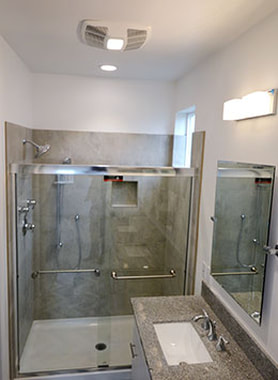
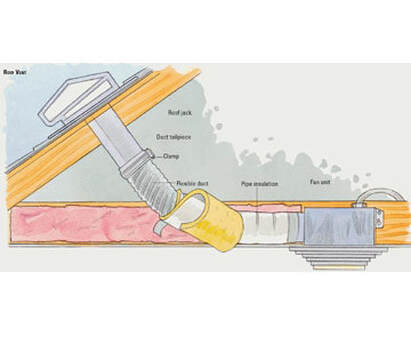
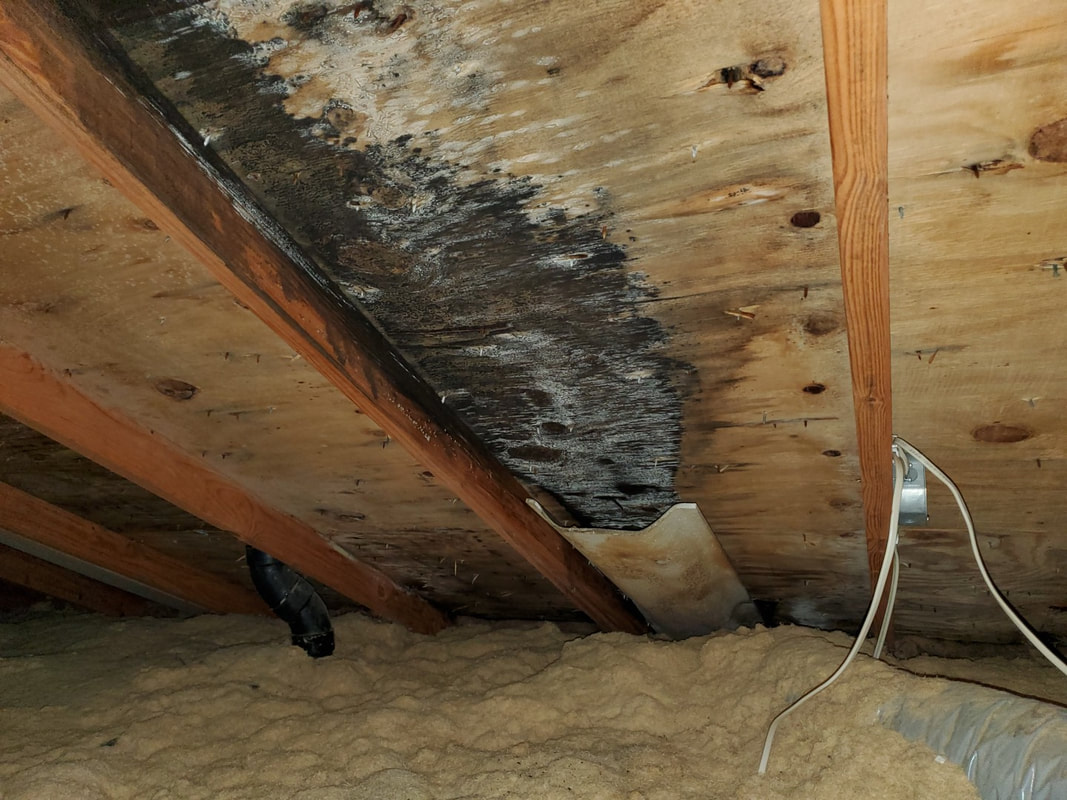
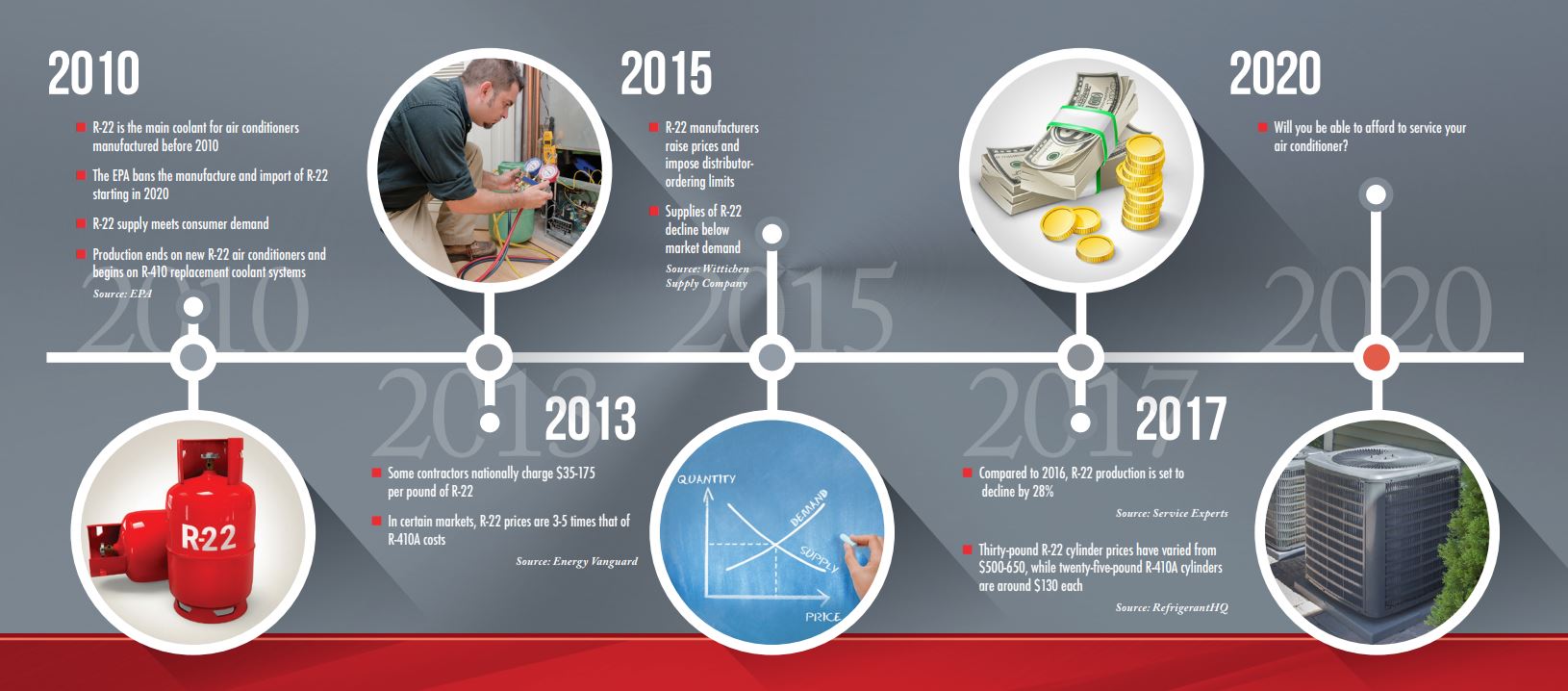
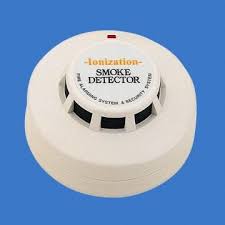
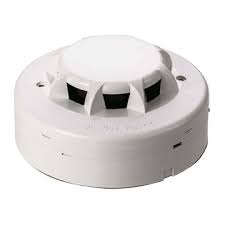
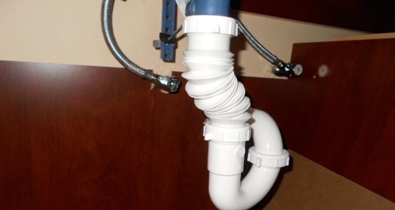
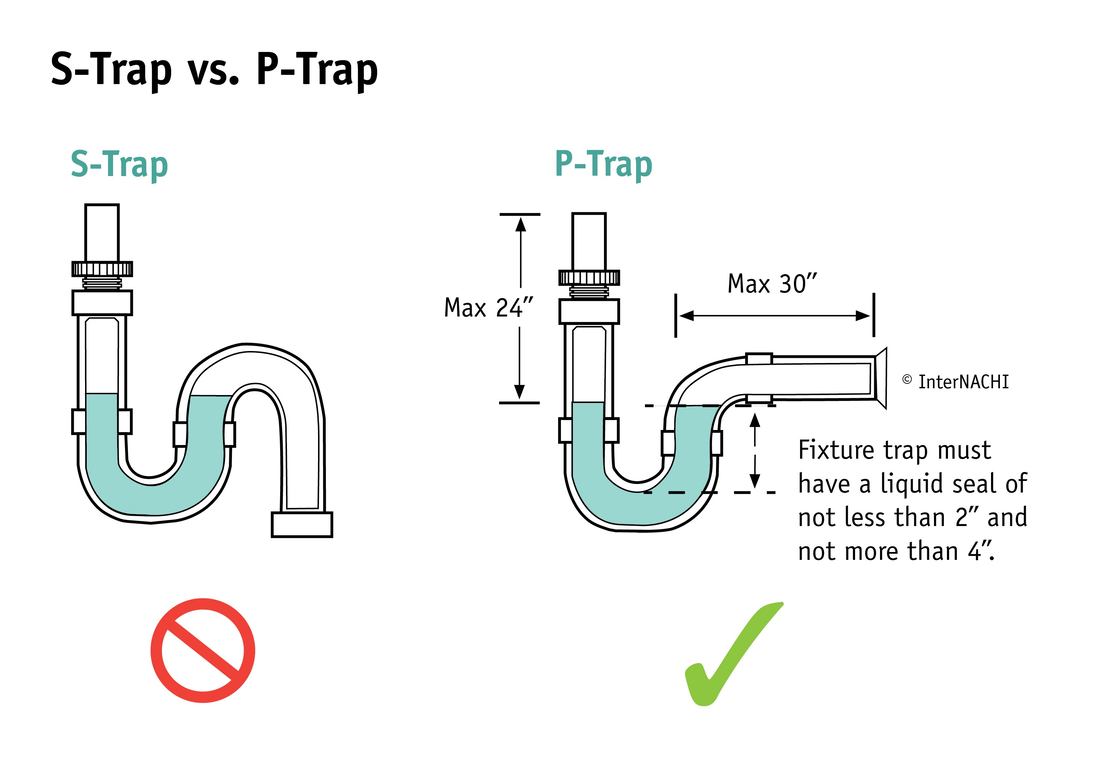
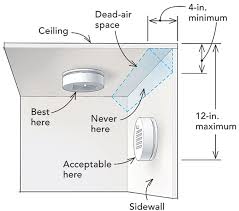
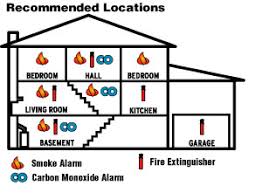

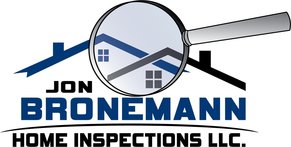
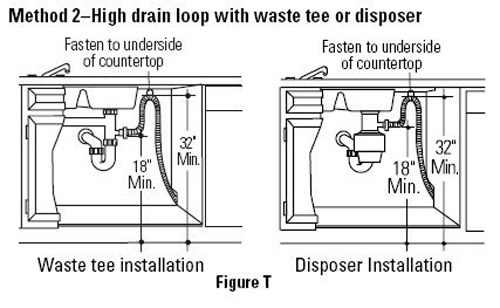
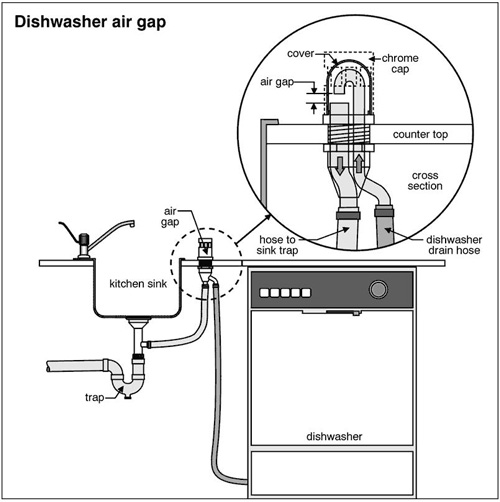
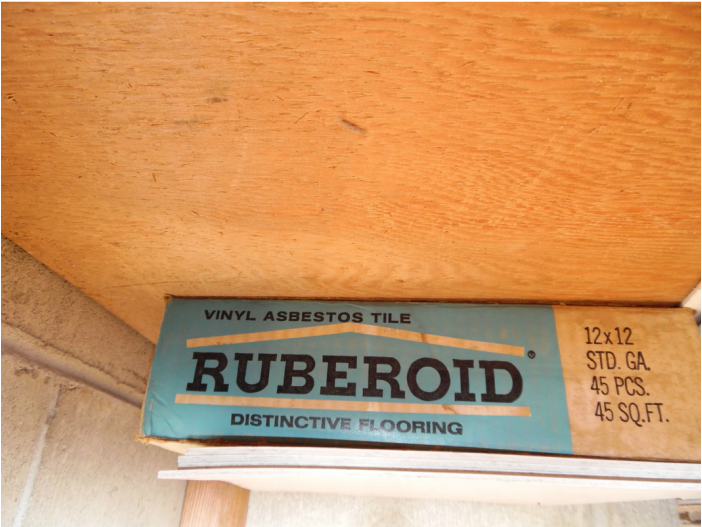
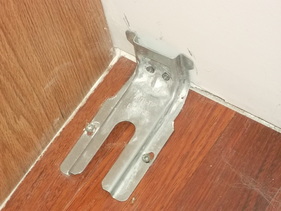
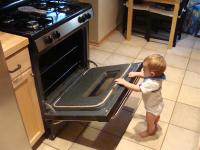


 RSS Feed
RSS Feed